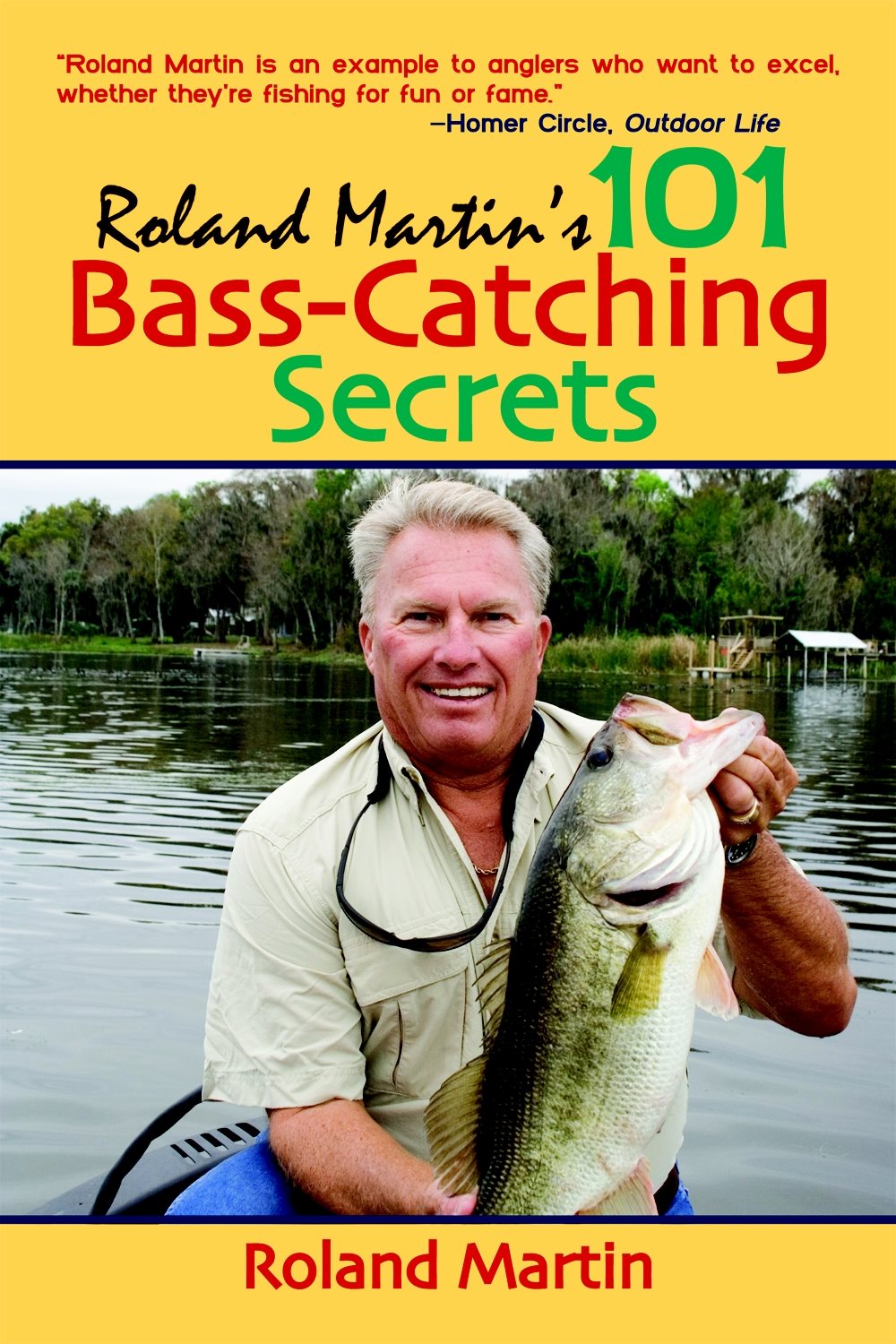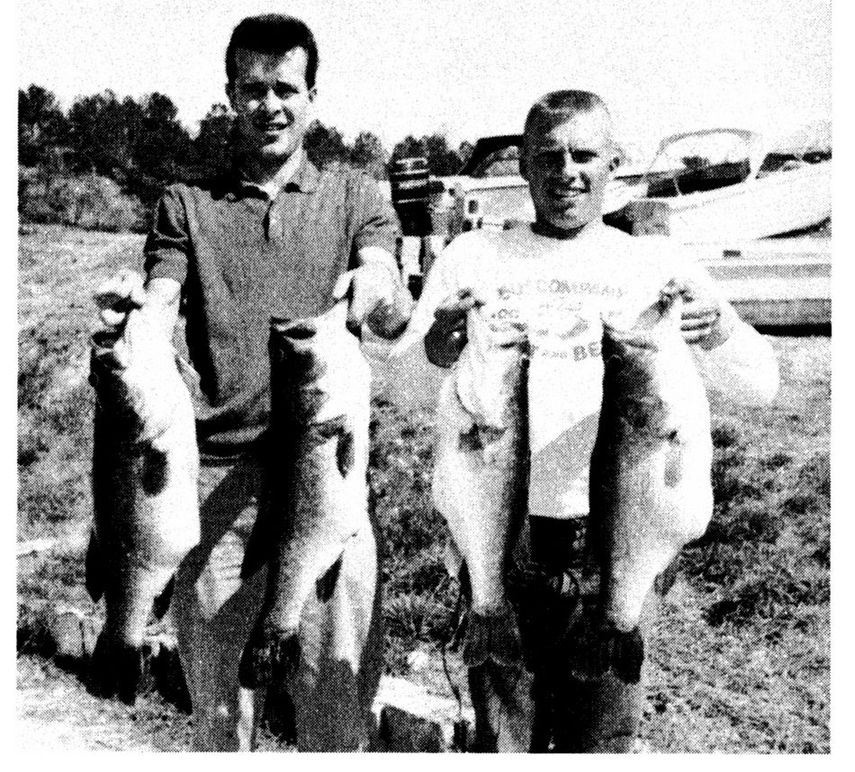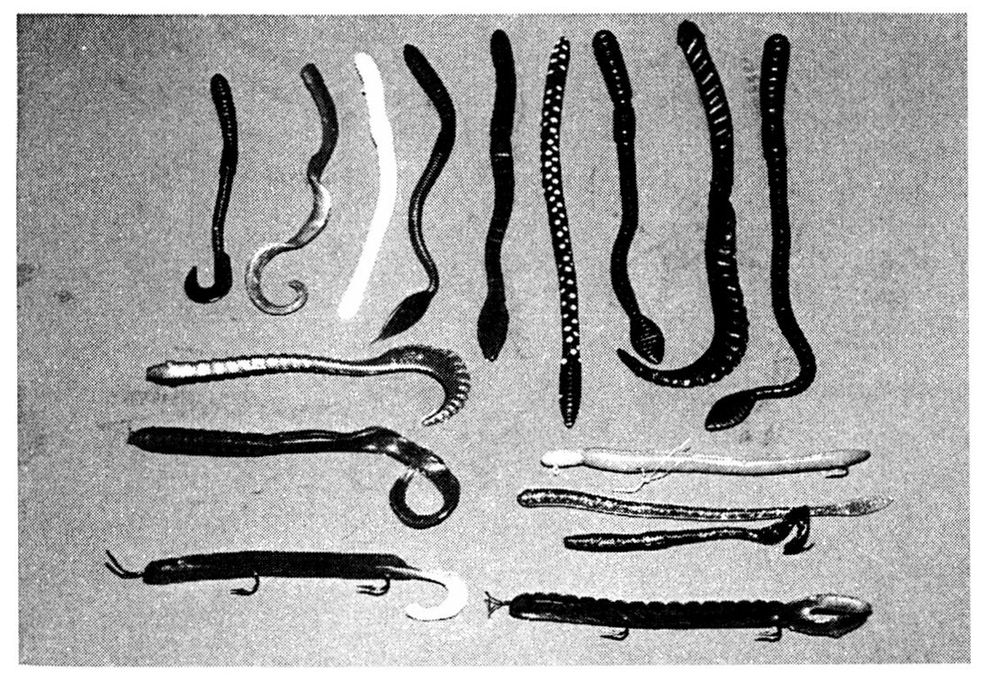Roland Martin - Roland Martins 101 Bass-Catching Secrets
Here you can read online Roland Martin - Roland Martins 101 Bass-Catching Secrets full text of the book (entire story) in english for free. Download pdf and epub, get meaning, cover and reviews about this ebook. year: 2008, publisher: Skyhorse, genre: Home and family. Description of the work, (preface) as well as reviews are available. Best literature library LitArk.com created for fans of good reading and offers a wide selection of genres:
Romance novel
Science fiction
Adventure
Detective
Science
History
Home and family
Prose
Art
Politics
Computer
Non-fiction
Religion
Business
Children
Humor
Choose a favorite category and find really read worthwhile books. Enjoy immersion in the world of imagination, feel the emotions of the characters or learn something new for yourself, make an fascinating discovery.
- Book:Roland Martins 101 Bass-Catching Secrets
- Author:
- Publisher:Skyhorse
- Genre:
- Year:2008
- Rating:3 / 5
- Favourites:Add to favourites
- Your mark:
- 60
- 1
- 2
- 3
- 4
- 5
Roland Martins 101 Bass-Catching Secrets: summary, description and annotation
We offer to read an annotation, description, summary or preface (depends on what the author of the book "Roland Martins 101 Bass-Catching Secrets" wrote himself). If you haven't found the necessary information about the book — write in the comments, we will try to find it.
Roland Martins 101 Bass-Catching Secrets — read online for free the complete book (whole text) full work
Below is the text of the book, divided by pages. System saving the place of the last page read, allows you to conveniently read the book "Roland Martins 101 Bass-Catching Secrets" online for free, without having to search again every time where you left off. Put a bookmark, and you can go to the page where you finished reading at any time.
Font size:
Interval:
Bookmark:

First of all, the plastic worm is the most versatile bass bait in the world. I would estimate that Ive caught at least half of my lifetime bass on the plastic worm in various sizes, colors, and shapes. And in the major bass-fishing tournaments in the past decade, probably half of the success has been with the plastic worm. Without a doubt, its the No. 1 lure, and there are a lot of reasons for this.
The plastic worm is the most weedless and snagless lure available. It can be fished at all depths and all speeds, and can be jigged, cast, trolled, and floated. There are so many variations in plastic-worm fishing that using the worm is a complete art and science by itself.
Some bass fishermen I know use plastic worms exclusively. Ask them what kind of bass fishing they do, and they reply, Im a worm fisherman. And thats all they take. Theyve sixteen rods with sixteen different types and sizes of plastic worms. Bass-fishing pro John Powell of Montgomery, Ala., estimates that he uses a plastic worm about 98 percent of the time. Plastic worms really are a big part of my bass fishing, too.
Artificial worms havent been around all that long, at least in terms of popularity. But note the word popularity. Larry Mayer, an avid collector of antique fishing lures, found that rubber-worm baits rigged on hooks were advertised in a Shakespeare tackle catalog dated about 1907. Obviously, however, artificial worms were far from popular between 1910 and 1950.
My first actual experience with a plastic worm came in 1957. I was still in high school and was fishing a lot of farm ponds in Maryland. I ran into an Eastern Shore fisherman named Louis Sullivan, who currently holds the record for entering the most Sports Afield citation-winning bass in the year; he entered forty-eight bass above 5 pounds in 1963. Sullivan had learned of plastic worms, and he ordered his first ones out of Ohio from manufacturer Nick Creme of Akron. The first worms Sullivan received were 7 or 8 inches long. On each worm was a spinner, five or six little red beads, and two weedless hooks. The whole thing was on a monafilament harness. It was a swimming-type lure, and the way to fish it was to throw it out near some cover and reel it back.

Wading the grass and fishing a plastic worm is still one of my favorite pastimes on Santee-Cooper. This action took place in 1976.
That same year I caught my first bass on a plastic worm. I was fishing a small pond with Floyd Parks, one of my school buddies, and I threw out this harnessed worm near a clump of lily pads. I was reeling it in, and I felt a little bump. I set the hook and caught a bass. Throughout 1957, Sullivan, Parks, and I caught dozens of bass, including several pretty good ones, on that harnessed worm rig.
In 1958, wed heard just enough about DeLong worms and the Creme worms that some of the guys werent using that spinner on the front. It wasnt that big a deal. You could take one or two weedless hooks and rig a worm behind a split shot and start crawling it a little deeper. You could throw it out in deeper water, and this was especially effective during the midday hours.
The beautiful thing about the plastic worm back then was that most bass fishermen left the lake at nine a.m. during hot weather because they were surface-plug fishermen. The plastic worm simply opened up the midday hours. Now you could fish and delve the deeper depths with a slowly moving underwater lure during hot weather and catch some good fish. Thats when I really started getting into the single-hook concept of plastic worming. I still fished with light spinning tackle at that time, and this was a bad deal. But with a split shot ahead of the worm, I still caught some bigger bass, including some 5-pounders.
How we fished those worms was really ridiculous. At that time we merely wanted to keep and kill and eat everything that ever struck. We were using spinning reels with 8- and 10-pound-test lines, and wed whip those ol worms out there and crawl em along the bottom until finally something pecked at them. Then wed open our bails and permit the bass to run with the worm just all over the place. After maybe smoking a whole cigarette or waiting a full minute, wed close the bail and start easing in the line. The line would pull free of weeds or sticks, and wed get in all the slack and then set the hook. Sure enough, those bass had swallowed it, and sometimes theyd swim clear behind the boat. We had light lines and light rods, and with the worm down in their gullets, not much of a hook set was needed. There would have been no way to release those bass; all we caught were mortally hooked. If they didnt break our lines, we caught em. But about half the time, those bass had gone through the lily pads or around stickups, and they broke off simply because we were letting them run forever.

The plastic worm has evolved into todays best all-around artificial lure and one of the main weapons of tournament professionals throughout the country.
This wasnt very efficient. So about a year later we started fishing more of the open-water reservoirs, such as Tridelta, Loch Raven, and Rocky Gorge. We also fished some water-supply lakes around the Washington, D.C., area and near Baltimore. Wed use a No. 4 split shot, a No. 6 weedless Aberdeen hook, and an 8-inch plastic worm in either black, natural color, or red.
Soon we learned that if we used stiffer spinning rods, we could set the hook a little better. Instead of letting them run and swallow the worm, why not set the hook quicker with a little heavier tackle and avoid gut-hooking the fish?
In 1959 Tom McNey and I set the record on bass in Loch Raven Reservoir. We had seven bass over 6 pounds in one day, and these were caught on blue plastic worms. Hardly anyone in the state of Maryland had ever fished a plastic worm at that time, much less a blue one. Three years later, Tom and I really had progressed in our plastic-worm fishing. We were going out with electronic fish locators and contour maps and we were fishing deep structure which never had been fished in many of these old city lakes, and one day we caught twenty-one bass all over 4 pounds on plastic worms.

Tom McNey (left) and I with 41 pounds of largemouths taken from Santee-Cooper in March 1965, all on plastic worms. The one in my left hand was my first over 10 pounds.

Todays plastic worm manufacturers have developed worm styles for several specific purposes. The first five worms (from left to right) are general casting worms (6- to 8-inches in length) primarily rigged Texas-style. The remaining worms on the top row are spawning worms ranging in length from 8 to 10 inches (and fished with very little weight). The two curl-tail at left are my choices for flipping. The three small worms at right are best suited for deep-water structure fishing. The two worms on the bottom row are Do-Nothing worms, designed for fishing deepwater structure.
Font size:
Interval:
Bookmark:
Similar books «Roland Martins 101 Bass-Catching Secrets»
Look at similar books to Roland Martins 101 Bass-Catching Secrets. We have selected literature similar in name and meaning in the hope of providing readers with more options to find new, interesting, not yet read works.
Discussion, reviews of the book Roland Martins 101 Bass-Catching Secrets and just readers' own opinions. Leave your comments, write what you think about the work, its meaning or the main characters. Specify what exactly you liked and what you didn't like, and why you think so.












